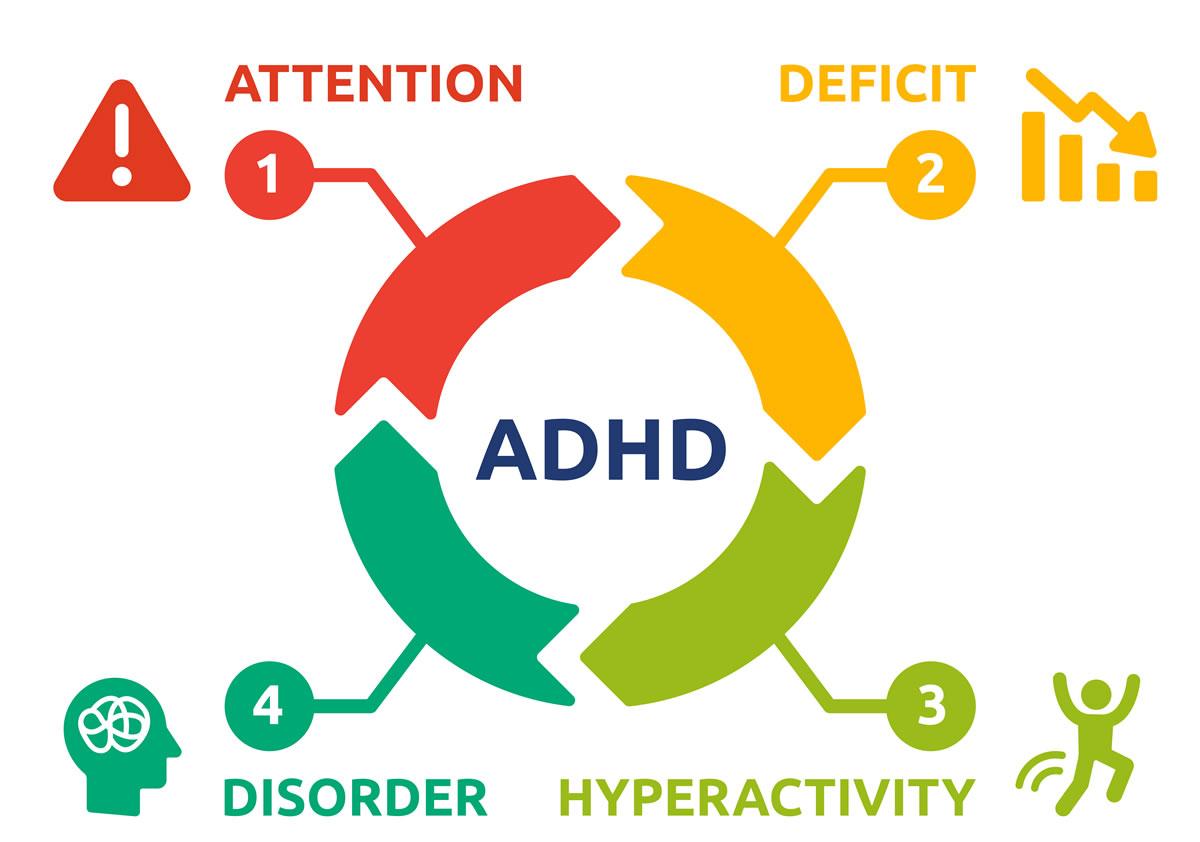Attention Deficit Hyperactivity Disorder (ADHD) is a common neurodevelopmental condition that often intersects with other mental health disorders. Understanding how ADHD differs from other mental disorders can be challenging but is essential for accurate diagnosis and effective treatment. This article explores the key differences between ADHD and other mental health conditions, providing insights into their unique features, overlaps, and implications for treatment.
What is ADHD?
ADHD is a neurodevelopmental disorder characterized by persistent patterns of inattention, hyperactivity, and impulsivity. These symptoms can significantly impair an individual’s ability to function effectively in various settings, such as at school, work, or in social situations. ADHD is typically diagnosed in childhood, though it can persist into adulthood.
Key Symptoms of ADHD
Inattention:
Difficulty sustaining focus, forgetfulness, and disorganization.
Hyperactivity:
Excessive fidgeting, restlessness, and an inability to stay seated.
Impulsivity:
Hasty decisions, interrupting others, and difficulty waiting for one’s turn.
ADHD vs. Anxiety Disorders
Anxiety disorders, such as Generalized Anxiety Disorder (GAD) and Social Anxiety Disorder (SAD), involve intense and persistent worry or fear that affects daily functioning. While ADHD and anxiety disorders share some overlapping symptoms, they are distinct in several ways.
Key Differences
Nature of Symptoms:
ADHD:
Symptoms are primarily related to inattention, hyperactivity, and impulsivity.
Anxiety Disorders:
Symptoms involve excessive worry, fear, or avoidance behaviors.
Onset and Duration:
ADHD:
Symptoms typically emerge in childhood and are chronic.
Anxiety Disorders:
Can develop at any age and may vary in duration, often triggered by specific stressors.
Focus of Symptoms:
ADHD:
Difficulty with organization and task completion.
Anxiety Disorders:
Persistent worry or fear, often about specific situations or objects.
Overlaps and Comorbidities
ADHD and anxiety disorders can co-occur, complicating diagnosis and treatment. Individuals with ADHD may experience heightened anxiety due to their difficulties with organization and social interactions. Conversely, chronic anxiety can exacerbate ADHD symptoms, making it challenging to distinguish between the two.
ADHD vs. Depression
Depression, including Major Depressive Disorder (MDD), involves pervasive feelings of sadness, hopelessness, and a loss of interest in previously enjoyed activities. Comparing ADHD and depression reveals important differences in symptomatology and treatment.
Key Differences
Symptom Focus:
ADHD:
Symptoms revolve around attention, activity levels, and impulse control.
Depression:
Symptoms include persistent sadness, changes in sleep and appetite, and a lack of energy.
Emotional Experience:
ADHD:
Emotional dysregulation may occur but is often secondary to inattention or impulsivity.
Depression:
Emotional symptoms are primary, with a significant impact on mood and outlook.
Functioning Impact:
ADHD:
Impairs executive functions such as planning and organizing.
Depression:
Affects motivation, interest, and overall energy levels.
Overlaps and Comorbidities
ADHD and depression can coexist, particularly in adults. Individuals with ADHD may develop depressive symptoms due to ongoing difficulties with task management and social relationships. Both conditions require careful assessment to ensure that both are adequately addressed in treatment plans.
ADHD vs. Bipolar Disorder
Bipolar Disorder is characterized by extreme mood swings, including manic or hypomanic episodes and depressive episodes. Distinguishing ADHD from bipolar disorder involves understanding the nature and patterns of mood disturbances.
Key Differences
Mood Patterns:
ADHD:
Mood swings may be present but are typically less intense and less cyclical.
Bipolar Disorder:
Features distinct periods of mania or hypomania and depression, with significant mood swings over time.
Duration of Symptoms:
ADHD:
Symptoms are consistent and chronic.
Bipolar Disorder:
Symptoms fluctuate between manic and depressive episodes.
Behavioral Manifestations:
ADHD:
Impulsivity and hyperactivity are consistent and persistent.
Bipolar Disorder:
Impulsivity may occur during manic phases but is not a constant feature.
Overlaps and Comorbidities
Both ADHD and bipolar disorder can present with impulsivity and emotional dysregulation. However, the episodic nature of mood disturbances in bipolar disorder distinguishes it from the more persistent symptoms of ADHD. Accurate diagnosis requires careful observation of mood patterns and symptom history.
ADHD vs. Autism Spectrum Disorder (ASD)
Autism Spectrum Disorder (ASD) is a developmental disorder characterized by challenges with social communication and restricted, repetitive behaviors. ADHD and ASD can share some symptoms, but they also have distinct features.
Key Differences
Social Interaction:
ADHD:
Social difficulties are often related to impulsivity and inattention.
ASD:
Social challenges are related to difficulties with understanding social cues and forming relationships.
Behavioral Patterns:
ADHD:
Characterized by hyperactivity, impulsivity, and inattention.
ASD:
Features repetitive behaviors, specific interests, and strict routines.
Communication:
ADHD:
Language and communication difficulties are less pronounced.
ASD:
Significant challenges with verbal and non-verbal communication are common.
Overlaps and Comorbidities
ADHD and ASD can co-occur, and individuals may exhibit symptoms of both conditions. Differentiating between the two requires a comprehensive evaluation of social skills, communication abilities, and behavior patterns.
Conclusion
Understanding the differences between ADHD and other mental disorders is crucial for accurate diagnosis and effective treatment. While ADHD shares some symptoms with conditions like anxiety, depression, bipolar disorder, and ASD, each disorder has unique features and challenges. Accurate diagnosis involves a thorough assessment of symptom patterns, duration, and impact on daily functioning. Properly identifying and distinguishing these conditions ensures that individuals receive appropriate and targeted treatment, improving their overall quality of life.
